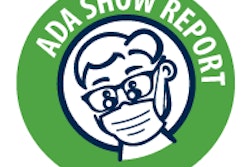
SAN FRANCISCO - Dental patients are notoriously inattentive to oral hygiene instructions, but there is something hygienists can do to make them pay more attention: Appeal to their emotions.
That's according to Trisha O'Hehir, RDH, who spoke to a room packed to capacity at the ADA Annual Session today.
She advised her audience to share information and give oral hygiene instructions in simple and effective sound bites, understand the science behind their advice, and remember to have fun with their patients.
"We are often focused on the science when speaking to our patients," O'Hehir said. "We talk about the oral systemic link and bone loss when often patients don't even know they have bone in there."
The most effective marketing campaigns focus on emotions and then support the emotional message with science and logic, she said. Dental professionals -- dentists in particular -- are often portrayed in an unflattering light in the media and get unintentional negative marketing from movies and other forums.
"We have to overcome this negative marketing," O'Hehir said.
She used the example of cigarette companies and fast food chains emphasizing that it is a scientific fact that their products are harmful to health and people are aware of that, so they use emotions to attract people instead.
"Science would not sell these products," she said.
Toothpaste companies market their products by saying that their product will make teeth "feel clean." In fact, O'Hehir pointed out that if a patient just drags a toothbrush through their mouth for a few seconds, their teeth are not clean but their tongue is numb, making their mouth "feel clean."
Sex sells
O'Hehir used examples to illustrate which emotional appeals sell products and explained how one of them is sex. Sex has been used to sell everything from toilet paper to cars, and she described how it can be used in dentistry.
"Kissability sells fresh breath products," she said. "Why can't we use it to sell prevention and oral hygiene?"
“Kissability sells fresh breath products.”
Kissability can be used as part of a tagline that opens up a conversation about oral hygiene.
"Ask teenage boys, 'Do you want to be kissable?' and you will get their attention," O'Hehir told the audience. "Create an emotional tagline and then connect it to a scientific sound bite."
They are not interested in dental hygiene instruction, but they do want to have fresh breath so they are kissable, she explained.
O'Hehir also suggested some simple prevention instructions to emphasize with patients:
- Clean your tongue.
- Floss with water.
- Dry brush inside first.
- Skip brushing and start cleaning in between.
- Strive for five xylitol exposures each day.
"Present complex material in a short phrase, and repeat sound bites several times at each appointment," she said. Examples of good sound bites include Nike's "Just do it" and BMW's "The ultimate driving machine" -- both use a short sentence to discuss the essence of their products.
An example of a dental sound bite could be "To be more kissable under the mistletoe," O'Hehir said to a laughing audience. She was once invited to participate on a radio talk show to discuss that very thing, she said.
"I was giving the same advice as I would give any oral hygiene patient, but if I had said I would discuss ways to improve oral hygiene [rather than being more kissable], they would not have invited me on the show," she said.
Complexities of biofilm
O'Hehir's lecture also focused on understanding the complexities of oral biofilm formation, explaining cell level changes within the periodontium that lead to bleeding upon probing, and understanding the difference between intraoral and extraoral bad breath.
As she explained the complex science behind these problems, she again presented sound bites that can be used with patients to explain and fight these complicated problems in an easy-to-understand manner:
When asking patients about plaque, ask them if their teeth feel like they are wearing sweaters. Or does it feel like the bottom of a bird cage in their mouth, or does it feel simply "fuzzy"?
When discussing bleeding, patients should be told that bleeding is not normal and that it is a sign of infection. They should also be informed that calculus does not cause bleeding but biofilm does, and that hormones can influence bleeding and provide a growth factor for bacteria. In addition, aspirin does not increase bleeding in a healthy mouth, and while smoking reduces bleeding, quitting smoking increases bleeding.
"Bacterial biofilm is a complex ecosystem triggering a cascade of inflammatory responses leading to tissue destruction, bleeding, and bad breath," O'Hehir wrote in her course summary. "Distilling this information into sound bites is an easy way to communicate your prevention message to achieve oral health in your practice."



















